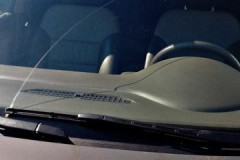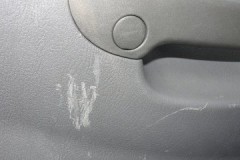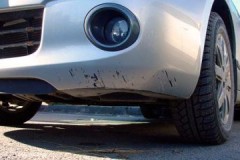Tips from experienced car owners on how to remove deep scratches on your car
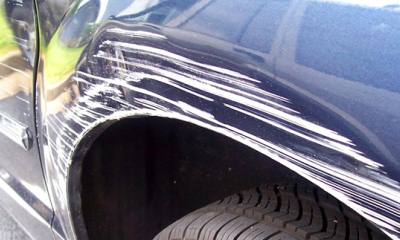 Active use of the car will inevitably lead to scratches on it.
Active use of the car will inevitably lead to scratches on it.
While minor defects are easy to deal with, deep injuries require a special approach.
Read about how to remove deep scratches on a car and return the surface of a car to its original smoothness and shine, read the article.
Content
Is it possible to cope with the means at hand?
You can try to get rid of scratches with the help of available tools. They are sometimes effective. It is better to patch up the defect at least for a while than to ride with exposed metal.
Means that can be used to restore the defect:
- WD-40,
- Toothpaste,
- brake fluid,
- coloring pencil.
VD-40 grease is used as follows:
-
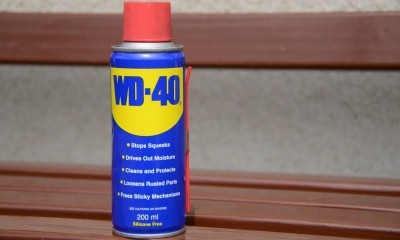 WD-40 is a first aid tool that allows you to get rid of scratches for a short time.
WD-40 is a first aid tool that allows you to get rid of scratches for a short time.The area must be processed, wiped dry, and the edges must be cleaned with sandpaper with the finest abrasive.
- VD-40 is applied to a soft rag and driven in a circular motion over the scratch. The product will soften the paint and clog the damaged surface with it.
- Remove residual grease with a dry cloth.
You need to work with gloves so as not to damage the skin of your hands. VD-40 allows you to quickly get rid of scratches, but the effect of its application is short-lived, so you cannot do without high-quality restoration.
Instead of WD-40, you can use toothpaste:
- purchase a paste with a whitening effect;
- degrease the surface of the car with a scratch;
- apply the paste to a soft cloth and polish the body with it;
- leave the product for 15 minutes, remove its remnants with a paper napkin, rub the car until it shines.
The brake fluid helps to quickly mask the defect. Its effect is that it blurs the paint from an intact area and clogs a scratch with it. It is recommended to resort to this method when a major restoration of a part is planned in the future.
Mode of application:
- Wash the vehicle so that no dust remains on it. Allow the surface to dry.
- Apply brake fluid to a clean cloth and buff off the scratch.
- After 10 minutes evaluate the result. If it is satisfactory, rinse the machine with water.
Only white matter can be used for processing a car. If the rag is colored, the pigment from it can clog into the scratch, which will only aggravate the situation.
Colored pencils are available at auto dealerships. Their average cost is 250 rubles. If the desired color is not available, you can order it from the online market. Choosing the right tone, you will be able to effectively mask the scratch.
Mode of application:
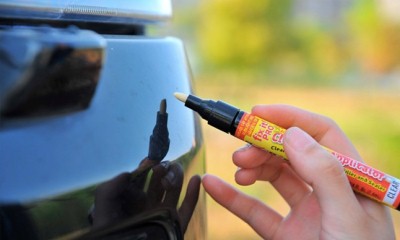 wash the car, degrease the treated area with White Spirit;
wash the car, degrease the treated area with White Spirit;- wait until the surface is completely dry;
- if dirt remains inside the scratch, or there are irregularities, it is carefully cleaned with fine-grained sandpaper;
- fill in the damage with a coloring compound using a pencil;
- when the paint sets, the surface of the car is polished with wax;
- the remnants of the product are removed with a soft cloth.
All of these methods allow you to get rid of deep scratches for a while, but then they will appear again. Therefore, it will not be possible to do without grinding, painting and polishing.
Car body restoration
Improvised means to cope with very deep scratches will not help, since not only the varnish coating is damaged, but the paint composition with a primer. Polishing or painting the defect with varnish will not achieve the desired effect.
However, there is a way to cope with a scratch on your own and at the same time keep within a small amount. Self-repair will be cheaper than going to a workshop.
Materials and tools you will need:
- a degreasing agent such as acetone;
- paint in the color of the damaged part;
- acrylic-based varnish;
- polish;
- sandpaper of various grain sizes, ranging from P120 to P2500;
- two syringes with a volume of 5 cubes;
- masking tape;
- polishing wheel with two nozzles: soft and medium hard.
When all the necessary tools are assembled, you can start working. Procedure:
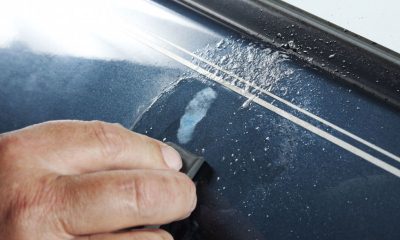 First, grind the scratch. The surface must be flat and smooth, without protrusions. Sanding is carried out with P2000 grit sandpaper. It must be moistened with a degreasing compound.
First, grind the scratch. The surface must be flat and smooth, without protrusions. Sanding is carried out with P2000 grit sandpaper. It must be moistened with a degreasing compound.- The nozzle is cut off the syringe so that it becomes sharp. Paint is poured into a separate container, which is filled with a syringe.
With its help, the coloring composition is squeezed out onto the scratch. When the layer is dry, the procedure is repeated.
- A day later, a small bulge will form on the surface of the car. It is removed with sandpaper, which was used for initial processing. However, this time you need a small piece, which does not exceed 4 cm in length and 2 cm in width. For ease of use, it is glued to a wooden block.
- The defect is polished carefully and with little effort, removing the protruding paint. The surface of the car must be moistened, but this time you can already use water.
- When polishing is complete, varnish is applied to the paint. It is also drawn into a syringe and squeezed out in a thin layer. It is good if you can apply it in an even, single line, without gaps.
- After the varnish has hardened, masking tape is glued on the sides of the scratch. This is to protect the old coating from peeling off during sanding.
- A new sandpaper with a grit of P1000 is attached to the block. With its help, remove excess varnish. Be sure to moisten the surface with water.
- Then the scotch tape is changed and the place of the former defect is treated with P2500 grit sandpaper. The third polishing of the varnish is carried out with P3000 sandpaper. The water is used for cooling and dust removal. The work continues until the transition between the own and the new paintwork is no longer noticeable.
The attachment is installed on a drill or grinder... The speed should not be too high. Water must be used to cool the surface.
Contacting specialists
Car repair shops that restore scratches include various types of damage as deep defects, ranging from damage to a car with a sharp object and ending with scuffs caused by light touches.
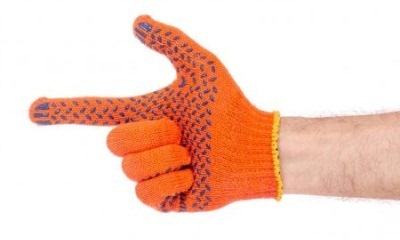 The undoubted advantage of contacting specialists is the high-quality restoration of the damaged area. They offer two options:
The undoubted advantage of contacting specialists is the high-quality restoration of the damaged area. They offer two options:
- local staining - the cost of the service starts from 2000 rubles;
- complete painting of the damaged element - the price of the work is about 7000 rubles.
With numerous deep defects, the latter option is preferable, since it gives a 100% result. If, in addition to removing the scratch, you need to straighten the part, then the price increases by 3000 - 5000 rubles.
Helpful information
Tips for removing deep scratches from machine surfaces:
- During the initial treatment of a scratch with sandpaper, do not use ordinary water as a lubricant. Since deep defects reach the metal surface and are not covered with paint, water will lead to rust.
- It is good if the paint used to cover the scratches completely matches the color of the car. However, a slight discrepancy in tone during self-restoration is acceptable.
A lot of useful and important information about the ways and means of removing scratches on a car can be found here.
Related videos
We remove a deep scratch without painting in 5 minutes, video instruction:
Conclusion
Deep scratches are difficult to process... For a start, you can try to cope with the help of available tools. Sometimes they allow you to mask the defect, so that it will no longer be conspicuous.
If these methods do not help, you will have to restore the car yourself, or contact a workshop.

